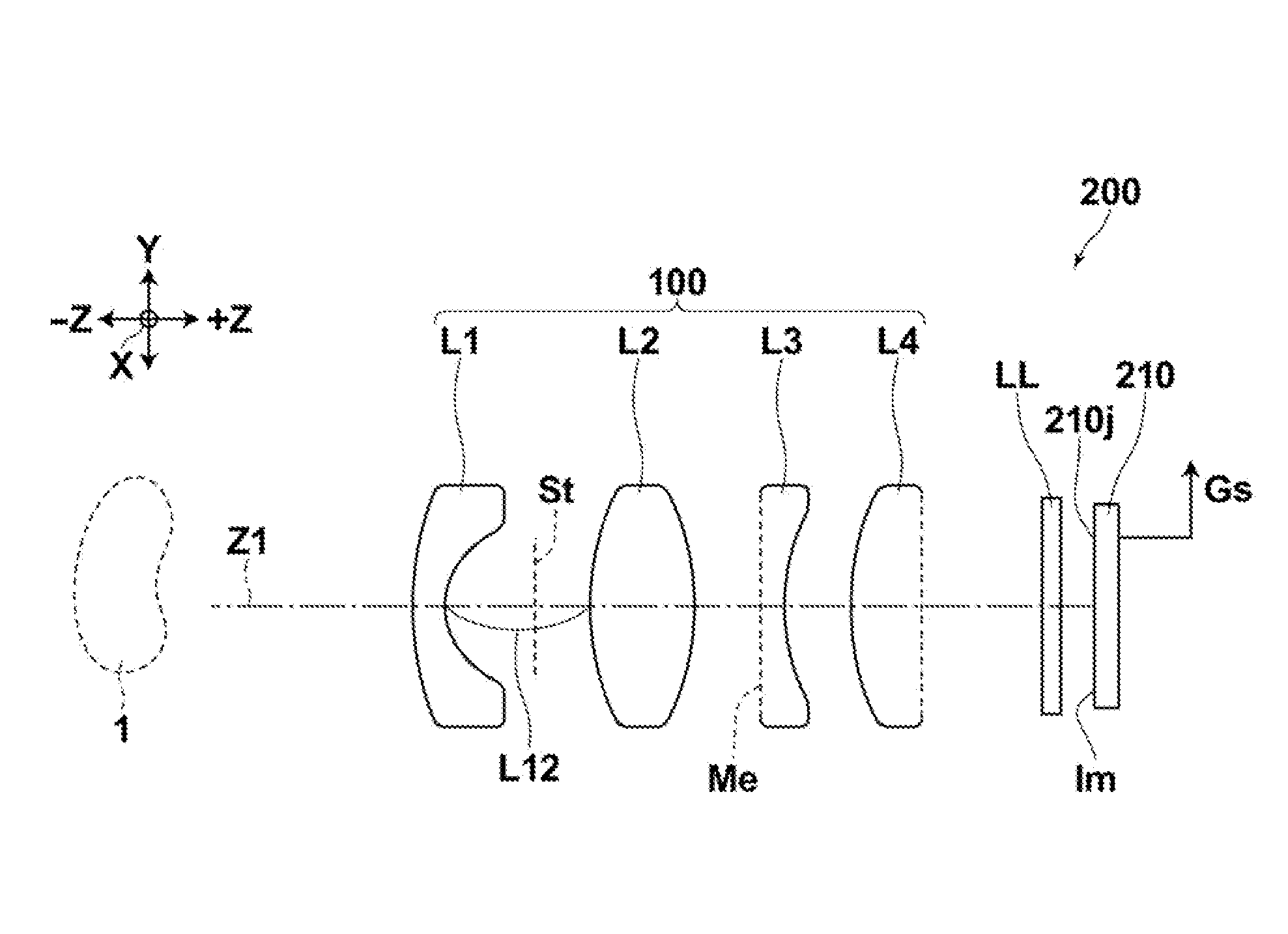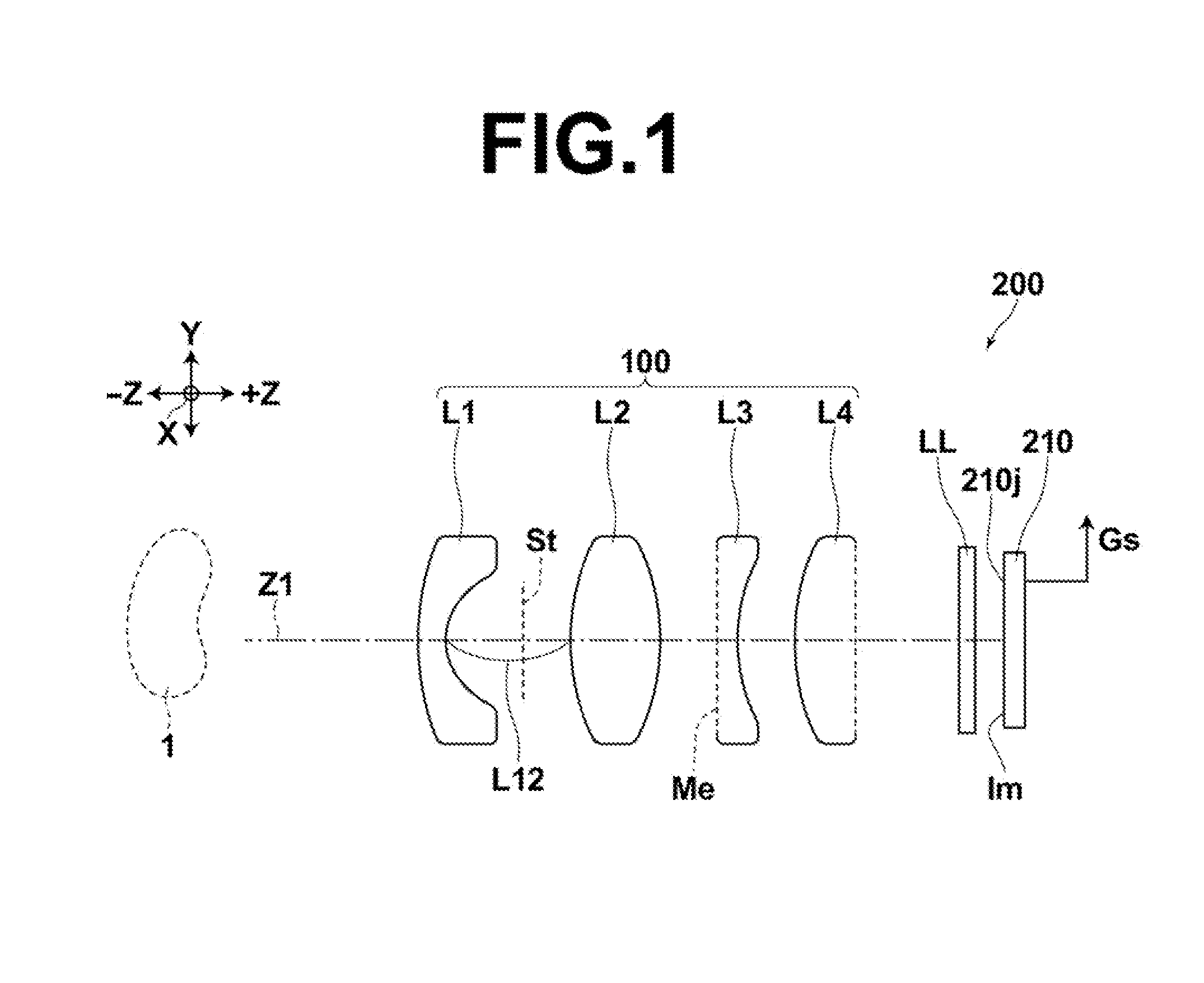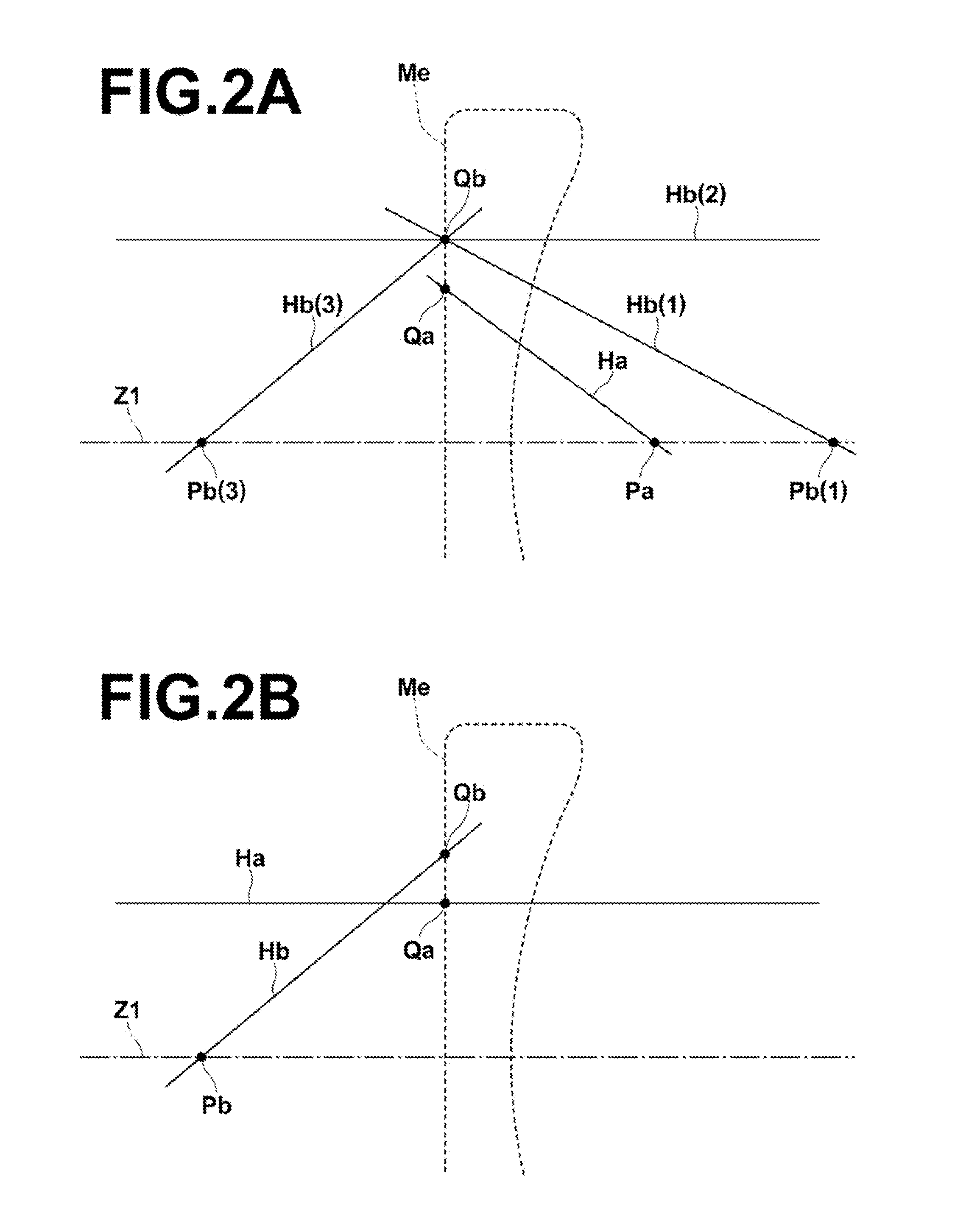Imaging lens and imaging apparatus using the same
a single-focus imaging and imaging apparatus technology, applied in the field of single-focus imaging lenses, can solve the problems of difficulty in obtaining a high-contrast image lack of appropriateness for downsizing, etc., to achieve satisfactory aberration correction, improve optical performance, and increase the design flexibility for improving various types of aberrations
- Summary
- Abstract
- Description
- Claims
- Application Information
AI Technical Summary
Benefits of technology
Problems solved by technology
Method used
Image
Examples
example 1
[0134]FIG. 4 is a cross-sectional view of an imaging lens of Example 1, schematically illustrating the configuration thereof with optical paths of light beams passing through the imaging lens.
[0135]The imaging lens of Example 1 is configured to satisfy all of the conditional expressions (1) to (7), and the conditional expression (8).
[0136]Table 1A shows lens data of the imaging lens of Example 1. In the lens data shown in Table 1A, the surface number i represents ith surface number Si in which a number i (i=1, 2, 3, - - - ) is given to each surface in a serially increasing manner toward the image side with the surface on the most object side being taken as the first surface. In Table 1A, the surface number is given also to an aperture stop St, an optical element LL having no power, and an image plane on which an optical image Im is formed.
[0137]The symbol Ri in Table 1A represents the radius of curvature of ith (i=1, 2, 3, - - - ) surface and the symbol Di represents the surface dis...
example 2
[0156]FIG. 5 is a cross-sectional view of an imaging lens of Example 2, schematically illustrating the configuration thereof with the optical paths of center light beam and outermost light beam passing through the imaging lens.
[0157]The imaging lens of Example 2 is configured to satisfy the conditional expressions (1) to (7).
[0158]FIG. 12 illustrates aberrations of the imaging lens of Example 2.
[0159]Table 2A below shows lens data of the imaging lens of Example 2 and Table 2B shows aspherical coefficients of the imaging lens of Example 2.
TABLE 2AExample2Lens DataSiRiDireNdjν dj114.28571.97200.0001.4874970.2322.77141.00100.000(St) 3∞2.37203.060*46.00351.94400.0001.7725049.6*5−12.32590.75604.600*648.84500.60004.2001.6336023.59*73.87590.26900.000*85.56251.80300.0001.5339155.96*9−7.37516.65700.00010∞0.50000.0001.5168064.211∞0.50000.00012∞0.00000.0001. Third surface is aperture stop, twelfth surface is image plane, and tenth to eleventh surface are cover glass, filter, an the like.2. *...
example 3
[0160]FIG. 6 is a cross-sectional view of an imaging lens of Example 3, schematically illustrating the configuration thereof with the optical paths of center light beam and outermost light beam passing through the imaging lens.
[0161]The imaging lens of Example 3 is configured to satisfy the conditional expressions (1) to (7) and conditional expression (8).
[0162]FIG. 13 illustrates aberrations of the imaging lens of Example 3.
[0163]Table 3A below shows lens data of the imaging lens of Example 3, and Table 3B shows aspherical coefficients of the imaging lens of Example 3.
TABLE 3AExample 3Lens DataSiRiDireNdjν dj111.36362.80100.0001.5891361.1422.83962.27300.000(St) 3∞0.50003.65049.57923.93100.0001.7550052.325−5.65791.04004.900*684.39310.97000.0001.8051825.42*73.75380.42905.300*810.55661.77200.0001.7725049.6*9−5.84466.64270.00010∞0.50000.0001.5168064.211∞0.50000.00012∞0.00000.0001. Third surface is aperture stop, twelfth surface is image plane, and tenth to eleventh surface are cover g...
PUM
 Login to View More
Login to View More Abstract
Description
Claims
Application Information
 Login to View More
Login to View More - R&D
- Intellectual Property
- Life Sciences
- Materials
- Tech Scout
- Unparalleled Data Quality
- Higher Quality Content
- 60% Fewer Hallucinations
Browse by: Latest US Patents, China's latest patents, Technical Efficacy Thesaurus, Application Domain, Technology Topic, Popular Technical Reports.
© 2025 PatSnap. All rights reserved.Legal|Privacy policy|Modern Slavery Act Transparency Statement|Sitemap|About US| Contact US: help@patsnap.com



